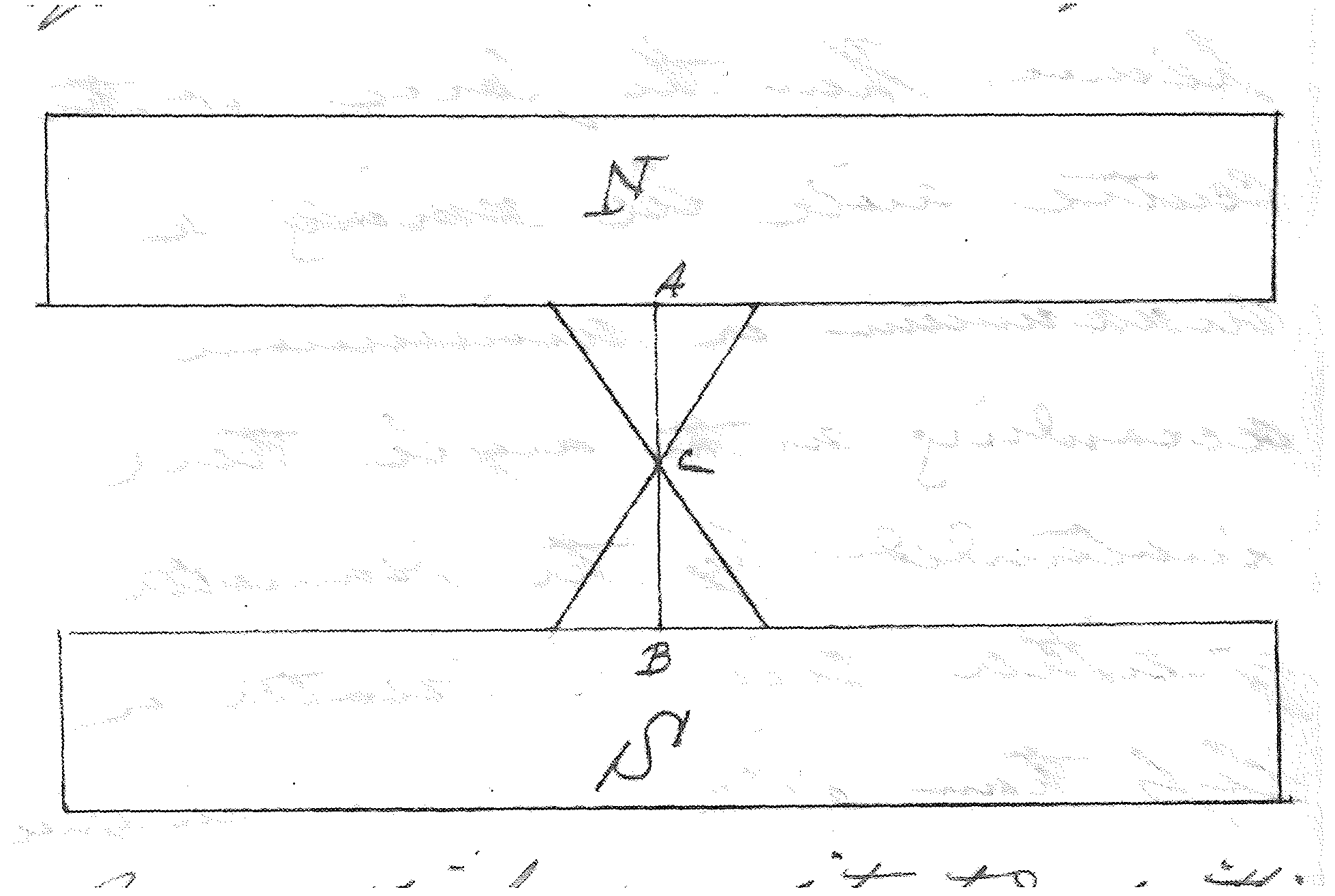George Gabriel Stokes to Faraday 13 November 1855
69 Albert Street Regent’s Park | London Nov 13th 1855
My dear Sir,
I forgot to say in my last letter1 that there was no particular hurry about the abstract of the paper2.
You will probably have found before this on reading my letter again that it was not independently but in consequence, and only in consequence, of mutual influence of the parts of the bar that I asserted that a non-magnecrystallic bar would set in a mathematically uniform field, and that, along the lines of force, whether the bar was para- or diamagnetic.
On referring to Thomson’s paper in the 2nd vol. of the Cambridge & Dublin Maths Journal3, I find that he has, as I supposed, stated that such a bar would set as I have said. He has merely stated the result, but I have no doubt it was to the mutual influence of the parts of the bar that he attributed the setting.
You said it was a mystery to you why a diamagnetic bar should appear less obstacle to the passage of the lines of force when it was perpendicular than when it was parallel to them. I asked if the fact was so, and you referred me to the experiment with the phosphorus. But after having maturely considered the thing I believe the true way of explaining the mystery is by denying the fact. I do not of course mean questioning the result obtained with the phosphorus. That was no doubt all right; but the setting of the phosphorus is explicable otherwise, namely from the non-uniformity of the field of force.
I think theory may be trusted for the mode of setting of a bar in a perfectly uniform field. At the same time on careful consideration the experiment I proposed seems to me quite sound in principle, though the forces may be too feeble to allow the result to be exhibited experimentally. I think it likely enough that by care a distance between the poles might be found such that a little bar of soft iron and a bar of phosphorus placed successively in the centre of the field would set axially; but I doubt whether the setting in the same direction of a bar of phosphorus in a solution of protosulphate of iron and of, suppose, a tube of protosulphate of iron in water would not be a result too delicate to obtain.
I have obtained the following result.
Let there be a pair of rings of poles, north and south, symmetrically situated with respect to a plane bisecting at right angles the line joining the centres of the rings, the planes of the rings being both parallel to this plane. Then the force at the centre will be axially a maximum or minimum according as the angle there subtended by the diameter of either ring is greater or less than 67˚24’. Now imagine a pair of opposite flat poles divided similarly into concentric rings having their centres in the axis. We may apply the above result to each pair of opposite rings. Hence if N, S be two flat poles, AB the axis, and C the centre of the field, and if round AB we describe a cone having its vertex at C, and its semi-vertical angle equal to 33˚42’, those points of the
 poles which are situated within the cone will tend to make the force at C axially a minimum, and those parts which are situated outside the cone will tend to make it axially a maximum. If the poles were infinite, and uniformly magnetised, the two tendencies would exactly neutralise each other. Bearing this in mind, and referring to your sketch, I think we might have predicted that the force would be axially a minimum in the centre of the field.
poles which are situated within the cone will tend to make the force at C axially a minimum, and those parts which are situated outside the cone will tend to make it axially a maximum. If the poles were infinite, and uniformly magnetised, the two tendencies would exactly neutralise each other. Bearing this in mind, and referring to your sketch, I think we might have predicted that the force would be axially a minimum in the centre of the field.
By rendering the poles concave, it seems to me that we could so weaken the effect of those parts of the poles which lie within a cone of 67˚24’ as to cause the transition from axial minimum to axial maxm to take place when the poles were moved from a distance apart greater than to one less than a certain very manageable distance.
Believe me | Yours very truly | G.G. Stokes.
Profr. Faraday | &c &c &c
Bibliography
FARADAY, Michael (1856c): “Experimental Researches in Electricity. - Thirtieth Series. Constancy of differential magnecrystallic force in different media. Action of heat on magnecrystals. Effect of heat upon the absolute magnetic force of bodies” Phil. Trans., 146: 159-80.
Please cite as “Faraday3039,” in Ɛpsilon: The Michael Faraday Collection accessed on 27 April 2024, https://epsilon.ac.uk/view/faraday/letters/Faraday3039